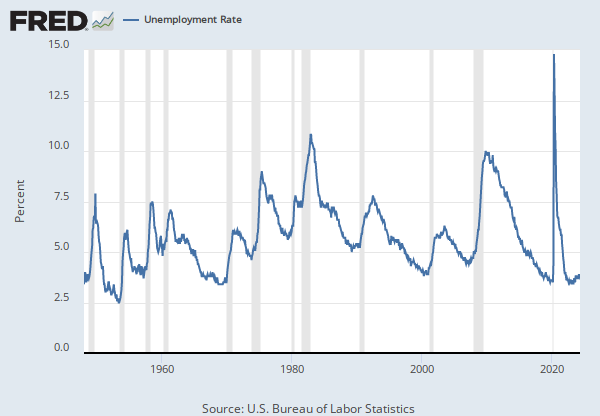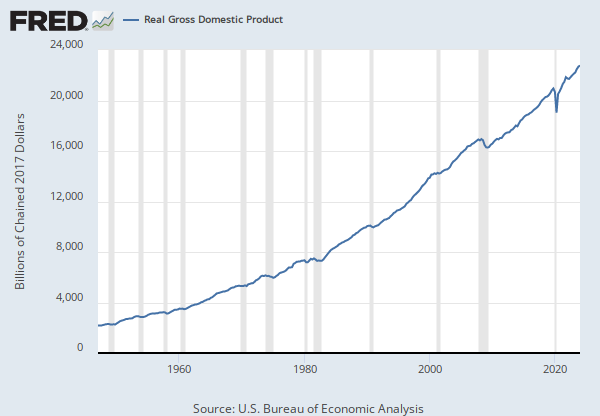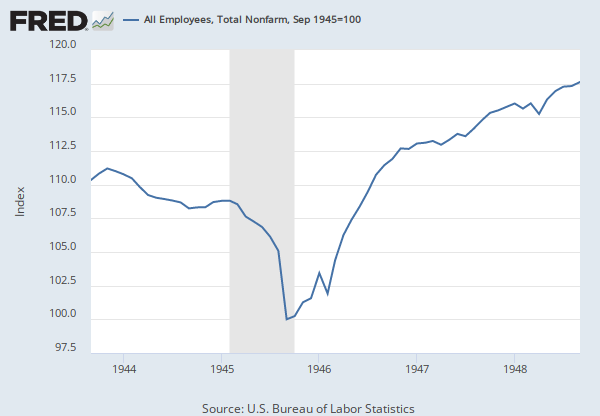Federal Reserve Economic Data: Your trusted data source since 1991
Data in this graph are copyrighted. Please review the copyright information in the series notes before sharing.
NOTES
Source: U.S. Bureau of Labor Statistics
Release: State Employment and Unemployment
Units: Thousands of Persons, Not Seasonally Adjusted
Frequency: Monthly
Suggested Citation:
U.S. Bureau of Labor Statistics, All Employees: Total Nonfarm in San Francisco-Oakland-Hayward, CA (MSA) [SANF806NAN], retrieved from FRED, Federal Reserve Bank of St. Louis; https://fred.stlouisfed.org/series/SANF806NAN, .
Source: U.S. Bureau of Labor Statistics
Release: State Employment and Unemployment
Units: Thousands of Persons, Not Seasonally Adjusted
Frequency: Monthly
Suggested Citation:
U.S. Bureau of Labor Statistics, All Employees: Total Nonfarm in San Jose-Sunnyvale-Santa Clara, CA (MSA) [SANJ906NAN], retrieved from FRED, Federal Reserve Bank of St. Louis; https://fred.stlouisfed.org/series/SANJ906NAN, .
Source: U.S. Bureau of Labor Statistics
Source: Federal Reserve Bank of St. Louis
Release: State and Metro Area Employment, Hours, and Earnings
Units: Thousands of Persons, Not Seasonally Adjusted
Frequency: Annual
Notes:
New York City, NY constitutes a significant percentage of the state's total statewide employment. This series is calculated in addition to the New York-Wayne-White Plains, NY-NJ (MD)'s statistics because of it's importance to the state. For more details on non-standard area definitions, visit the additional resources of the Current Employment Statistics.
Suggested Citation:
U.S. Bureau of Labor Statistics and Federal Reserve Bank of St. Louis, All Employees: Total Nonfarm in New York City, NY [SMU36935610000000001A], retrieved from FRED, Federal Reserve Bank of St. Louis; https://fred.stlouisfed.org/series/SMU36935610000000001A, .
Source: U.S. Bureau of Labor Statistics
Release: Employment Situation
Units: Thousands of Persons, Seasonally Adjusted
Frequency: Monthly
Notes:
All Employees: Total Nonfarm, commonly known as Total Nonfarm Payroll, is a measure of the number of U.S. workers in the economy that excludes proprietors, private household employees, unpaid volunteers, farm employees, and the unincorporated self-employed. This measure accounts for approximately 80 percent of the workers who contribute to Gross Domestic Product (GDP).
This measure provides useful insights into the current economic situation because it can represent the number of jobs added or lost in an economy. Increases in employment might indicate that businesses are hiring which might also suggest that businesses are growing. Additionally, those who are newly employed have increased their personal incomes, which means (all else constant) their disposable incomes have also increased, thus fostering further economic expansion.
Generally, the U.S. labor force and levels of employment and unemployment are subject to fluctuations due to seasonal changes in weather, major holidays, and the opening and closing of schools. The Bureau of Labor Statistics (BLS) adjusts the data to offset the seasonal effects to show non-seasonal changes: for example, women's participation in the labor force; or a general decline in the number of employees, a possible indication of a downturn in the economy. To closely examine seasonal and non-seasonal changes, the BLS releases two monthly statistical measures: the seasonally adjusted All Employees: Total Nonfarm (PAYEMS) and All Employees: Total Nonfarm (PAYNSA), which is not seasonally adjusted.
The series comes from the 'Current Employment Statistics (Establishment Survey).'
The source code is: CES0000000001
Suggested Citation:
U.S. Bureau of Labor Statistics, All Employees, Total Nonfarm [PAYEMS], retrieved from FRED, Federal Reserve Bank of St. Louis; https://fred.stlouisfed.org/series/PAYEMS, .
Source: U.S. Census Bureau
Source: U.S. Department of Housing and Urban Development
Release: New Residential Construction
Units: Thousands of Units, Seasonally Adjusted Annual Rate
Frequency: Monthly
Suggested Citation:
U.S. Census Bureau and U.S. Department of Housing and Urban Development, New Privately-Owned Housing Units Started: Single-Family Units [HOUST1F], retrieved from FRED, Federal Reserve Bank of St. Louis; https://fred.stlouisfed.org/series/HOUST1F, .
RELEASE TABLES
RELATED DATA AND CONTENT
Data Suggestions Based On Your Search
Content Suggestions
Other Formats
All Employees: Total Nonfarm in San Francisco-Oakland-Hayward, CA (MSA)
3-Month Average Change, Thousands of Persons, Monthly, Seasonally Adjusted Annual, Not Seasonally Adjusted Monthly, Seasonally AdjustedAll Employees: Total Nonfarm in San Jose-Sunnyvale-Santa Clara, CA (MSA)
3-Month Average Change, Thousands of Persons, Monthly, Seasonally Adjusted Annual, Not Seasonally Adjusted Monthly, Seasonally AdjustedAll Employees: Total Nonfarm in New York City, NY
3-Month Average Change, Thousands of Persons, Monthly, Seasonally Adjusted Monthly, Not Seasonally Adjusted Monthly, Seasonally AdjustedAll Employees, Total Nonfarm
Monthly, Not Seasonally AdjustedNew Privately-Owned Housing Units Started: Single-Family Units
Monthly, Not Seasonally Adjusted
























































